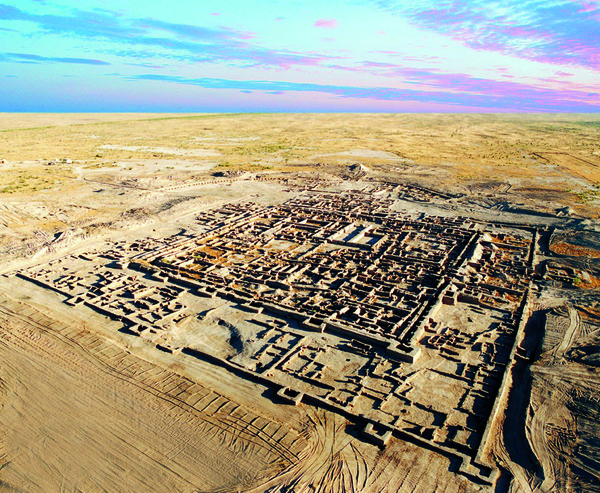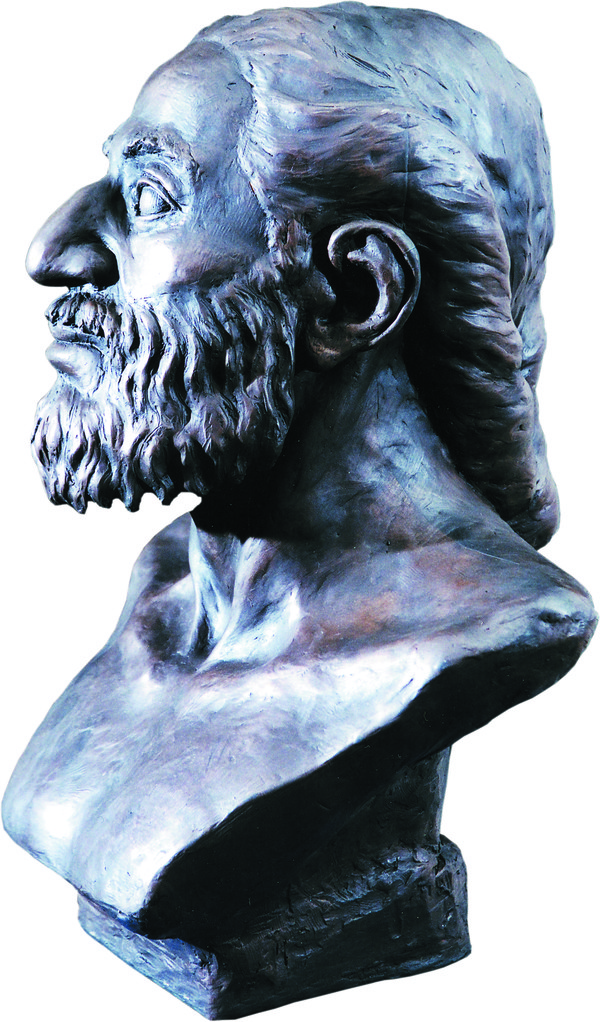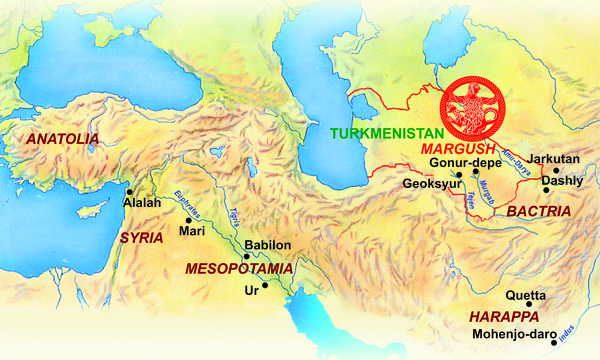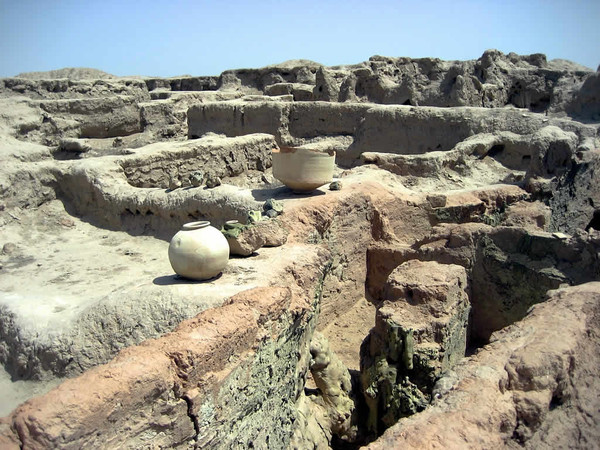MARGUSH – KINGDOM OF THE BRONZE AGE

[아츠앤컬쳐] 투르크메니스탄의 최고 지도자 구르반굴리 베르디무하메도프는 “투르크멘 민족은 세계 문화 보물과 문화적, 정신적 발전의 역사에 뛰어난 공헌을 한 고대 민족 중 하나”라고 언급하며 세계 문화사에서 투르크멘 민족이 차지하는 역할을 평가했다. 사실, 투르크멘 조상들은 거대한 유산을 남겼다.
수년 동안 세계에서 가장 큰 사막 중 하나인 카라쿰 사막의 모래 속에 무엇이 숨겨져 있는지 아무도 알지 못했다. 영원한 침묵 속의 건조한 사막으로 고고학자들이 신비한 마르구쉬 국가를 찾아 이곳에 왔다.

거의 1,000년이 지난 후, 무르갑 분지에서 고대 국가인 모우루(또는 마르구쉬, 마르기아나)가 건국되어 번영했으며, 메소포타미아와 인더스 강 계곡 사이에서 중동의 고대 경제와 문화에 중요한 역할을 했음을 발견할 수 있었다. 이곳의 수많은 궁전과 사원, 부유한 제국의 무덤, 고대 예술 작품은 이전에 알려지지 않았던 세계 문화와 문명의 고대 중심지가 존재했음을 증명했다. 한편으로 메소포타미아와 밀접하고, 다른 한편으로는 코펫다그 산기슭의 땅과, 또 다른 한편으로는 인더스 강 유역의 하라파와 연결되어 있었으며, 마르기아나의 기념비적인 궁전과 사원 건설을 위해 수만에서 수백만 개의 벽돌을 생산했다.
수도 정착지를 보면, 고누르데페의 배치로 판단할 때 마르구쉬 국의 미래 통치자들이 이곳의 전략적 가치를 제대로 평가했음을 알 수 있다. 가장 큰 발굴 단지는 북부 고누르다. 고누르는 마르구쉬 국의 수도로 중앙에 있는 신전과 궁전의 크기만 해도 약 25ha에 달할 정도로 컸고 수많은 벽돌이 필요했을 것이다.

한때 고대 마르구쉬에서 고고학 발굴은 유명한 고고학자 V.I. 사리아니디의 지휘 하에 이루어졌다. 이곳은 궁전 건축물, 사원, 건축물의 복합 단지이며, 방사성 탄소 연대 측정 결과 기원전 2300~2250년으로 올라간다. 서쪽에는 도시 묘지가 있었고, 중앙에서 남쪽으로 기원전 2천년 초에 테메노스라는 성지가 건설되기 시작했다.
성채의 중앙은 홀, 통치자와 그 가족의 거주지, 다용도 시설, 의식 복합체 및 기타 방과 마당이 있는 기념비적인 궁전이 있다. 궁전의 여러 출입구를 통해 불의 신전과 제물의 신전에 들어갈 수 있었다. 성채에 인접한 곳에는 다양한 크기와 깊이의 수조가 있었다. 신전 구조물과 수조는 방어벽으로 둘러싸여 있었다. 기념비적인 벽 밖의 사원 구조물에는 물의 북부 및 남부의 신전, 고누르의 첫 통치자의 것으로 추정되는 7개의 무덤이 발견된 제국 묘지, 공공 식당 단지 등이 있었다.

발굴 중에 대량의 도자기 용기도 발견되었다. 대부분은 도예 물레로 만들어 고품질로 굽는 과정을 거쳐 만들어졌다. 또한, 평면 스타일의 인체와 동물 형상의 테라코타 인형도 제작되었다. 이러한 스타일과 제작 기술은 남투르크메니스탄 청동기 시대의 인형과 여러 면에서 유사하다. 아지쿠이 유적에서 발견된 대부분의 고고학적 자료는 박트리아와 마르기아나 지역의 많은 유적에서 발견되었다. 따라서 이 유적은 기원전 3세기 말~2천년 초반에 해당한다.
이로 볼 때, 청동기 시대는 투르크메니스탄 역사에서 중요한 자리를 차지한다. 역사적 유적과 고고학적 발견은 그 시대의 특성을 증명하는 독특한 연대기를 제공하고 있다.

MARGUSH – KINGDOM OF THE BRONZE AGE
The National Lider of Turkmenistan Gurbanguly Berdimuhamedov in one of his speeches noted, that “Turkmens are one of the most ancient people which have made an outstanding contribution to the history of the world culture treasure and cultural and spiritual development”, has evaluated the role of our people in the history of world culture. And it is true, our ancestors have left us enormous heritage.
For many years nobody could suppose what the sands of Karakum Desert, one of the largest deserts in the world, have hidden. It seems that a dry desert has stood in majestic silence forever.
Archeologists have come here in searching of the mysterious Marygush state.
For almost 1,000 years which have passed, here in the basin of Murgab, the ancient country Mouru, or Margush, Margiana has been founded and blossomed, which took interposition between Mesopotamia and the valley of the Indus river has, has played a key role in paleoeconomy and culture of all the Middle East.

Numerous monumental palaces and temples, the richest imperial necropolis, ancient works of art with all persuasiveness testify to existence of one, unknown to the science before, ancient center of world cultural of world culture and civilization. From one side it was closely connected with Mesopotamia, from the second – with the lands at the foothills of Kopetdag and the third – with Harappa located in the valley of the Indus River. Construction of monumental palaces and temples Margiana (it is enough to say that only the central part of a palace and temple complex of Northern Gonur- capital of Margush country, for example occupies the area about 25 hectares) demanded production of many thousands and even millions of bricks.
If we pay attention to a layout of the capital settlement, which ruins are named Gonurdepe, it is possible to determine, judging by arrangement of Gonur, that the future governors of Margush country have appreciated strategic value of this place deservedly.

The largest excavated complex is Northern Gonur. At one time archeological excavations in ancient Margush took place under the leadership of a famous archeologist V.I. Sarianidi. It is the complicated ensemble of palace constructions, temples the beginning of constructions of which as shows set of radiocarbon dating relate to 2300-2250 B.C. In its western part was located the city necropolis, and from the centre to the south at the beginning of II millennium B.C. there has begun a construction of the sacred site named temenos.

The central part in the citadel occupies the monumental palace having front halls, dwelling apartments of the governor and his family, utility structures, ritual complexes and other rooms and yards. Thorough the different entries in the palace it was possible to get to a temple of fire and temple of sacrifices. At the adjoining to the citadel there were pools of the various size and depths. Temple strucrures and pools were also surrounded by a defensive wall. Outside of monumental walls there were also temple structures: northern and southern temples of water, imperial necropolis where were revealed seven tombs, presumably of first governors of Gonur, a complex of public meals.

During the excavation, a big number of ceramic vessels was found. The major part of ceramics is made on potter’s wheel and high quality of burning.
The other, not less anthropomorphous and zoomorphic terracotta figurines made in conditionally flat-bed style. Style and technics of making of these goods in many respects are typical for South Turkmenistan figurines of the Bronze age. The majority of archeological materials found in Adjikui settlements, have been met in many monuments of bactria and Margiana region. Therefore chronologically these monuments date to the end of the 3rd the first half of the 2nd millennium B.C.
Bronze age have taken the important place in the history of Turkmenistan. Historical monuments, archaeological finds, having served as the peculiar chronicle of that epoch testify to features of our national heritage.

글 ㅣ Ovezmukhammet Mammetnurov
People's Artist of Turkmenistan,
Candidate of Historical Sciences,
Associate Professor of the Turkmen State Institute of Culture

